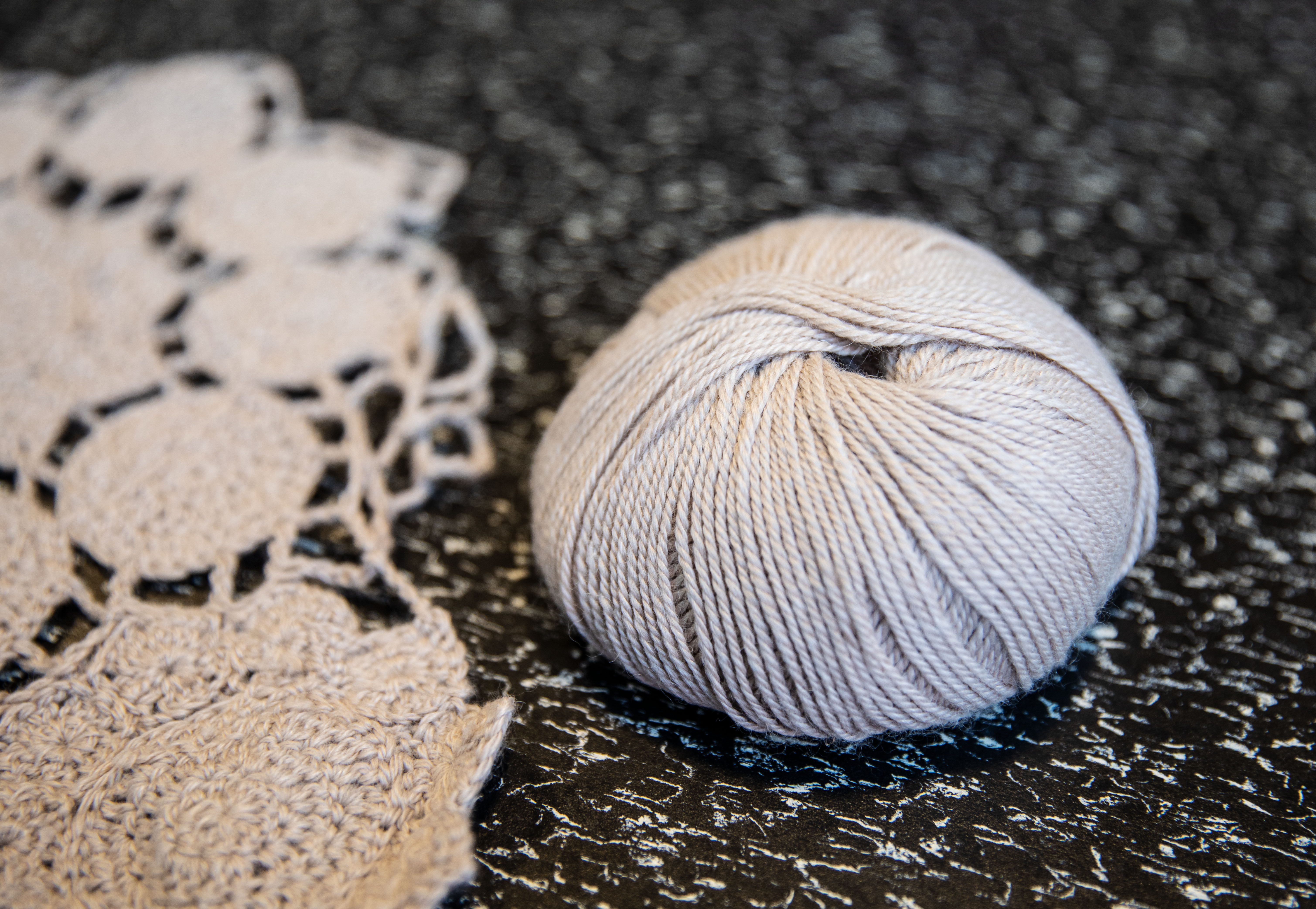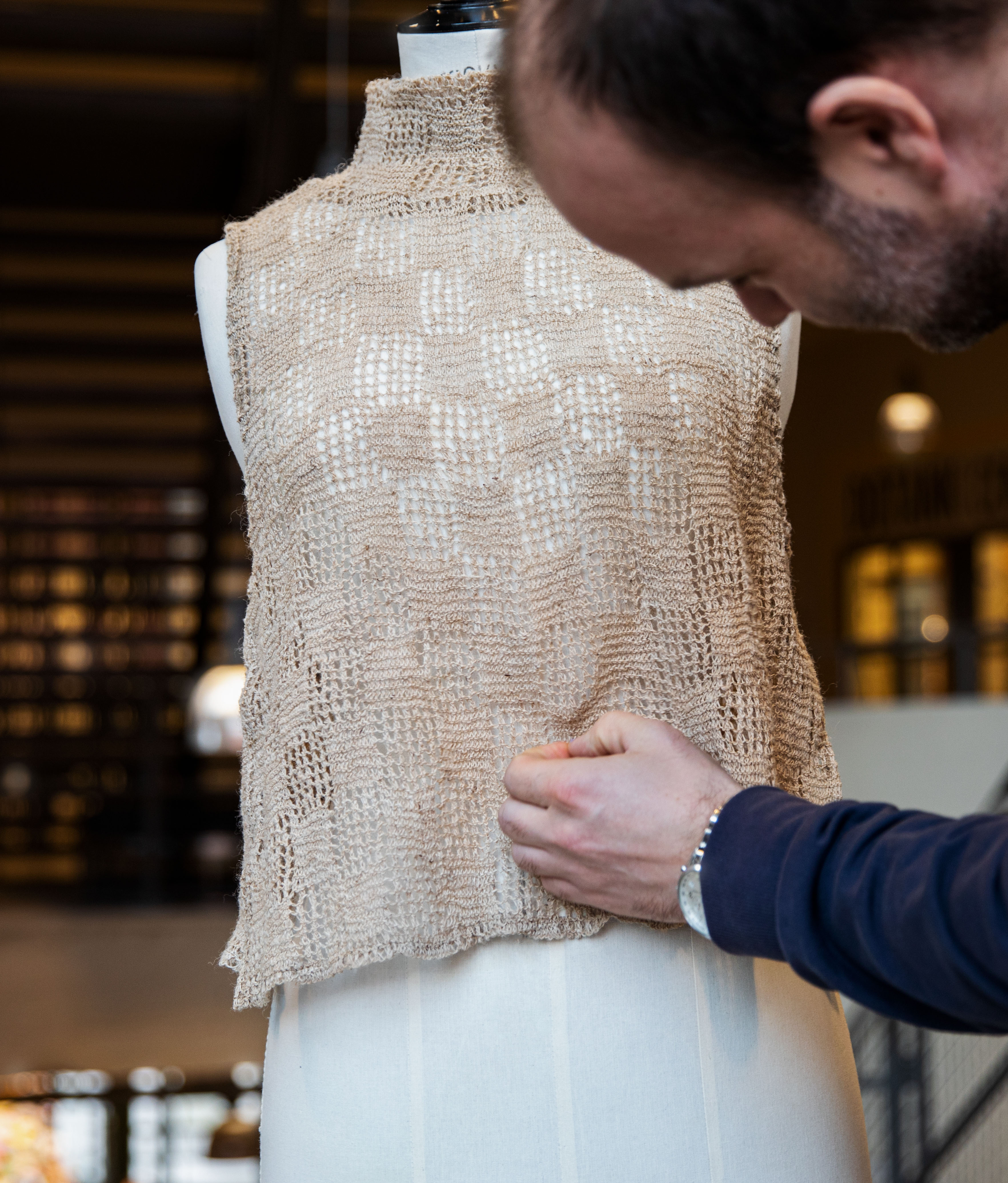
- Biospheric Design
- Innovative Materials

The aim of the project is to design textile value chains that fits within the natural cycles, such as the carbon, oxygen, nutrient and hydrogen cycles. Nettle fibers are interesting from that perspective and the textile products exhibited here are made from nettle fibers and merino wool mixed with nettle fibers. Materials were identified and products were made according to the principles below, which are derived from the system principles once developed by the Natural Step
Guiding principles:
• Use substances from Earth’s surface
• Ensure that substances from society can return safely to nature
• Enable prosperity for all
• Full transparency
Guringo Designstudio, Swedish School of Textile, Stockholm Resilience Centre
Efficient use of resources,
Sustainable Design Methods
Table cloth: Merino wool and nettle fibers (70/30), dyed with onion.
Top: 100% nettle fibers from Nepal
There is a saying that you can’t manage what you don’t measure. Currently we measure only a fraction of the sustainability impact from our value chains. In practice that mean that we are only able to manage a fraction of them. Because of the almost incalculable difficulties to measure our entire value chain we need to build systems that does not need to be measured in order to be sustainably managed. For that we have developed a set of guiding principles.






The textile fiber system is under pressure from several directions:
• Geopolitical instability requires a more resilient textile fiber system that can utilize
more sources of raw material.
• Economic- and population growth will likely result in doubled demand for textile
fibers in the coming decades from already stressed sources.
• To limit climate change to 1,5 degrees Celsius in accordance with the Paris
Agreement we must consciously recycle fibers and use raw material sources that can
build soil health.
In the module Innovative materials, we explore alternative raw material sources that allows
companies to explore the entire circular economy as well as novel design and functional applications.
We showcase materials that has significantly lower sustainability impact, can help to strengthen soil
health, and build resilient communities.
All group objects:
The origin and production of the materials that make up a product as well as the chemicals used to give the product its characteristics will greatly affect its environmental performance. Among the most important challenges are the substitution of fossil or other resource inefficient raw materials, phasing out harmful chemicals and implementing more efficient reuse/recycling methods at end-of-life.
In this knowledge area, research and development regarding the choice of materials, material combinations, and chemical substances in textile goods are dealt with, as well as possibilities for improved collection, sorting and material recycling.
The textile industry and the research community are well aware and very active when it comes to innovations in these fields. This holds promise for future possibilities of large scale implementation of renewable or recycled materials, as well as alternative, environmentally benign chemicals.
Each decision during product development affects sustainability and circularity. To develop products with lower environmental impact, the design team needs to be well aware of each component and process, and their individual and combined effect on the final product and its longevity.
One challenge is having comprehensive knowledge regarding sutainability when it comes to all of the components and processes that are a part of the production and lifetime of the garment. An additional challenge is implementing alternative design methods that do not require virgin components. Ongoing research inspires and shows methods to re-make existing products to have new functionalities and designs with an upgraded look.
With higher traceability when it comes to materials, components, and processes, there are increased possibilities for more conscious decisions. If communicated well, this gives the consumer a better basis for decisions.